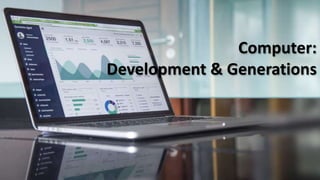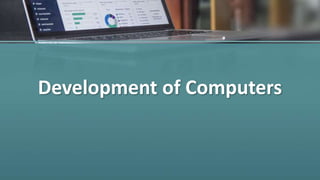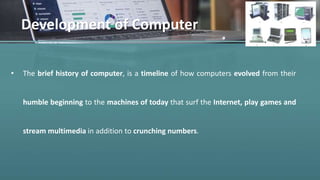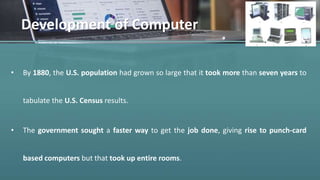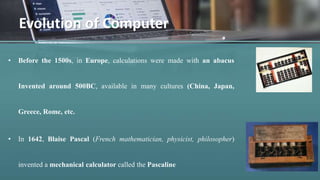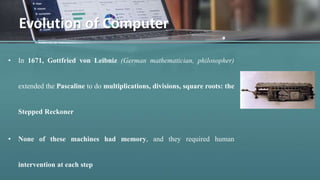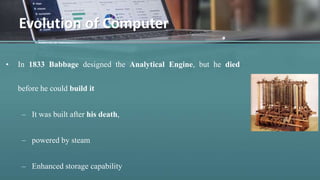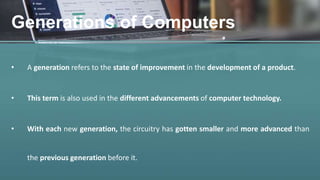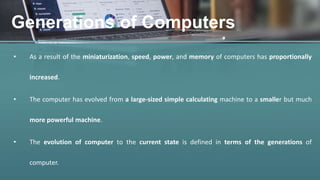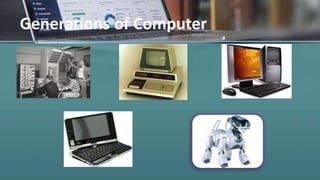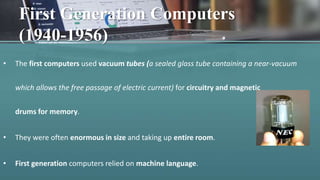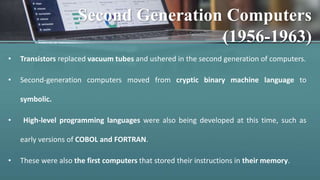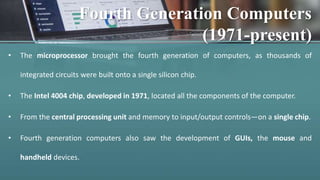The document summarizes the history and generations of computer development:
1) Early mechanical computers from the 1500s-1800s could only perform basic calculations and required human intervention at each step. Charles Babbage designed the Analytical Engine in 1833 but it was not built until later due to limitations of technology.
2) The first generation of modern electronic computers from 1940-1956 used vacuum tubes, magnetic drums, and were enormous in size. They were expensive to operate and prone to overheating.
3) Transistors replaced vacuum tubes in the second generation from 1956-1963, allowing computers to become smaller and more reliable. High-level programming languages also emerged.
